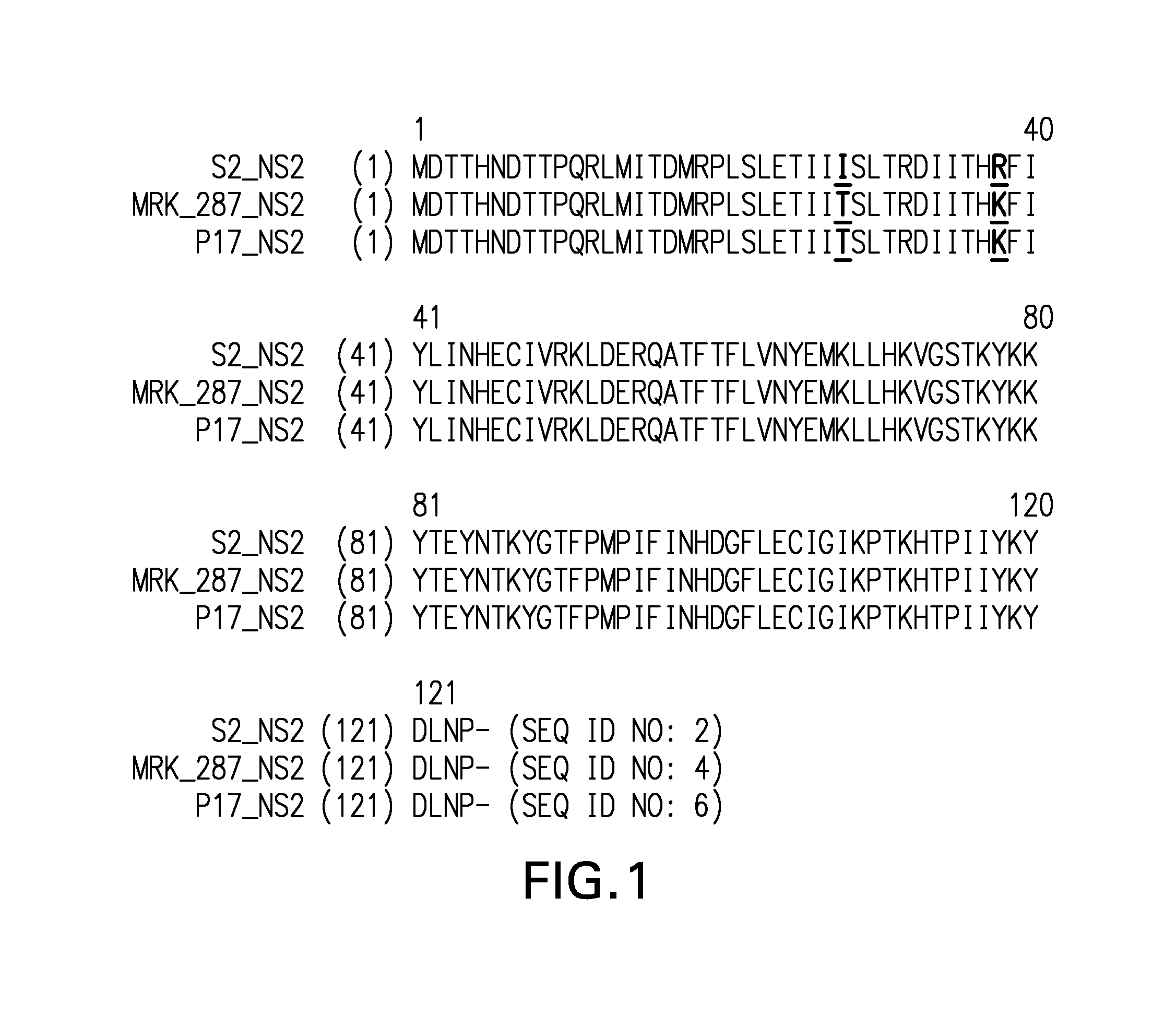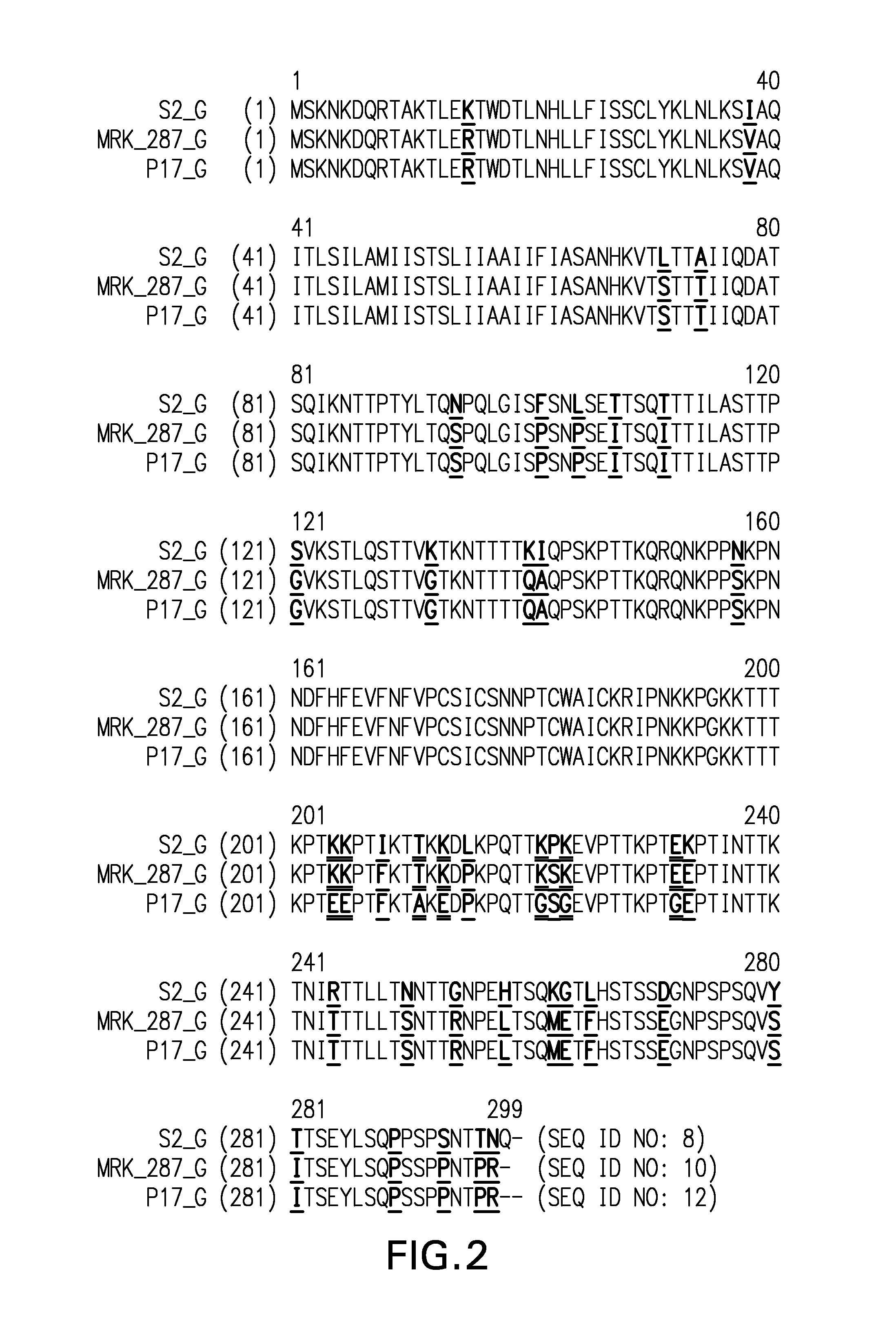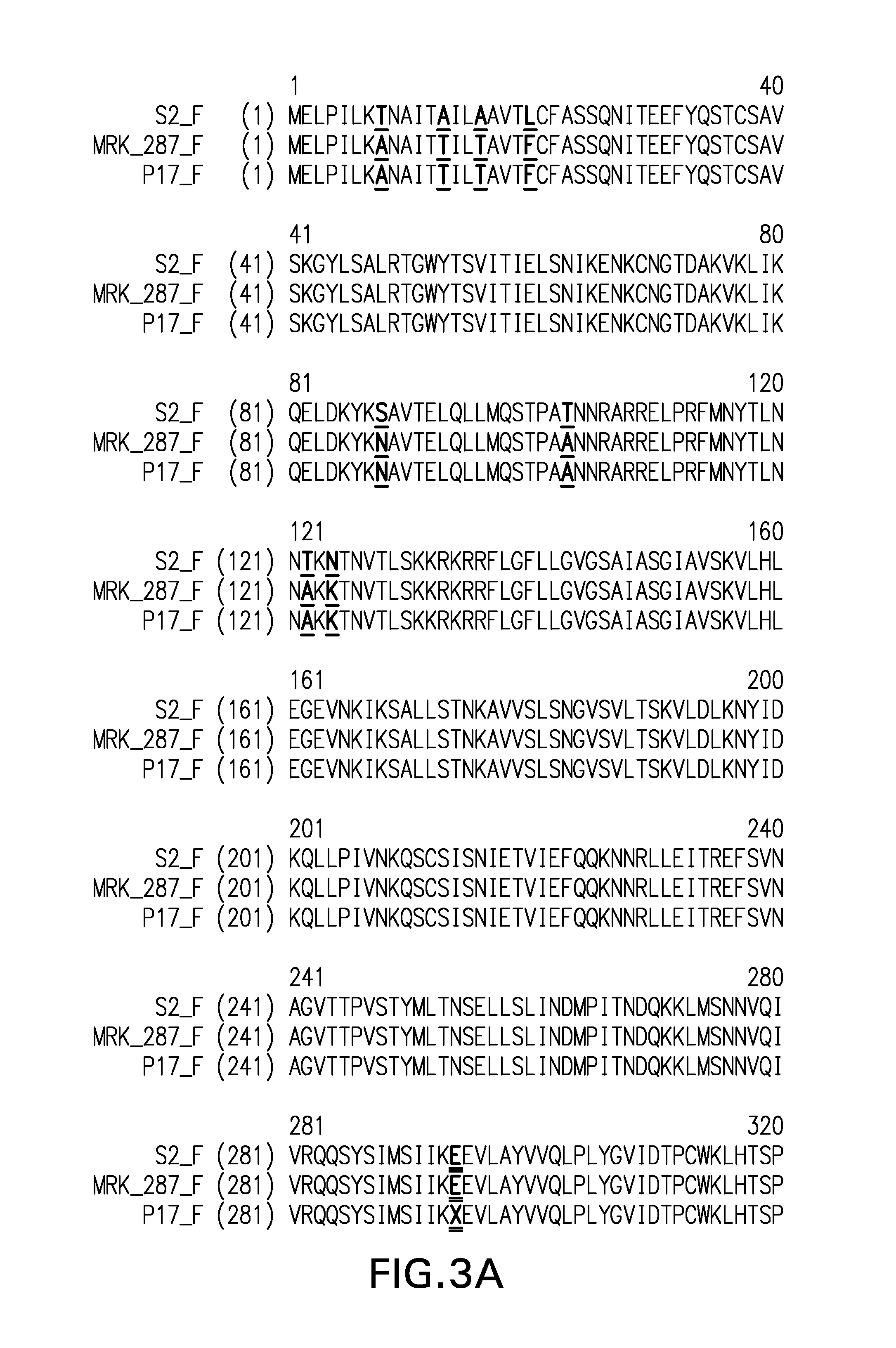Live, attenuated respiratory syncytial virus
a technology of attenuated respiratory and virus, which is applied in the field of live, attenuated respiratory syncytial virus, can solve the problems of high cost of recombinant ig preparations, no safe and effective vaccine to combat rsv infection and associated clinical diseases, and increased risk of severe and possibly life-threatening infections in elderly patients and immunocompromised individuals. , to achieve the effect of reducing the likelihood of rsv infection, reinfection, and reducing the severity of infection
- Summary
- Abstract
- Description
- Claims
- Application Information
AI Technical Summary
Benefits of technology
Problems solved by technology
Method used
Image
Examples
example 1
Passaging of MRK RSV Strain 287
[0118]Cells and virus—African Green Monkey kidney cell line Vero CCL-81 was utilized both for virus growth studies and plaque assay to monitor viral output. Parent virus utilized was Merck 287 strain hRSV which was stored lyophilized at −20 C. The parent Merck 287 virus had undergone two passages in GMK cells, then five additional passages in WI-38 cells (Bunyak et al., 1978, Proc. Soc. Exp. Biol. Med. 157:636-642; Bunyak et al., 1979, Proc. Soc. Exp. Biol. Med. 160:272-277; Belshe et al., 1982, J. Infect. Dis. 145:311-319). By sequence analysis, it was confirmed to retain a wild-type genotype at all known positions associated with attenuation.
[0119]Virus passaging and virus stock preparation—Parent virus was used to infect week-old confluent Vero monolayers at a 1:100 or 1:1000 MOI with a 1 hr attachment at 32° C.; overlay post attachment with maintenance medium comprised of WM's Medium E (Gibco), 1.6% recombinant human albumin (Delta biotechnologies)...
example 2
Sequencing of MRK RSV Strain 287 and Passaged Virus Stocks
[0122]RSV samples—Materials were supplied in 500-1000 μl aliquots of harvested viral supernatants from infected VERO cells. Full-length sequences were generated for: 1) MRK RSV Strain 287; 2) MRK RSV Strain 287, passage 17 (“p17”); and, 3) MRK RSV Strain 287, passage 22 (“p22”). Partial (targeted) sequences were generated for: 1) MRK RSV Strain 287, passage 5 (“p5”); 2) MRK RSV Strain 287, passage 10 (“p10”); 3) MRK RSV Strain 287, passage 15 (“p15”); and, 4) MRK RSV Strain 287, passage 18 (“p18”).
[0123]RNA extraction—RNA was extracted from virus culture supernatants using the QiaAMP Viral RNA Extraction Kit (Qiagen, cat. no. 52904) as per the manufacturer's protocol. In short, 140 μl of virus culture supernatants were added to lysis buffer, loaded onto a binding filter, washed and eluted in 60 μl of RNase-free water. Extracted RNA samples were stored at minus 20° C. Extracted RNA samples were used as templates for amplificat...
example 3
Attenuation of MRK RSV 287 Passaged Strains
[0150]African Green monkey challenge study—All animals were prescreened for seroneutralizing antibody titers. Only those with titers ≦4 were used in the current studies. The monkeys were anesthetized using 10 mg / kg ketamine, intramuscularly, and challenged with two doses each of 105.5 pfu of virus. The virus was administered by combined intranasal and intratracheal inoculation, 1 ml at each site per dose. Following challenge, nasopharyngeal swabs were collected daily from each monkey for 12 consecutive days, and bronchoalveolar lavage were collected at days 4, 5, 7, and 10. The nasopharyngeal samples were collected by gently rubbing 2-3 areas of the oropharynx region using a Darcon swab and placing the tips in a solution containing Hanks balanced salt solution (HBSS) containing 0.2 M Sucrose, 3.8 mM KH2PO4, 7.2 mM K2PO4 and 4.4 mM monosodium glutamate (SPG), and 0.1% gelatin. For bronchoalveolar lavage, approximately 5-7 ml HBSS was infused...
PUM
| Property | Measurement | Unit |
|---|---|---|
| concentration | aaaaa | aaaaa |
| temperatures | aaaaa | aaaaa |
| temperatures | aaaaa | aaaaa |
Abstract
Description
Claims
Application Information
 Login to View More
Login to View More - R&D
- Intellectual Property
- Life Sciences
- Materials
- Tech Scout
- Unparalleled Data Quality
- Higher Quality Content
- 60% Fewer Hallucinations
Browse by: Latest US Patents, China's latest patents, Technical Efficacy Thesaurus, Application Domain, Technology Topic, Popular Technical Reports.
© 2025 PatSnap. All rights reserved.Legal|Privacy policy|Modern Slavery Act Transparency Statement|Sitemap|About US| Contact US: help@patsnap.com



